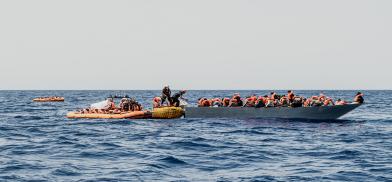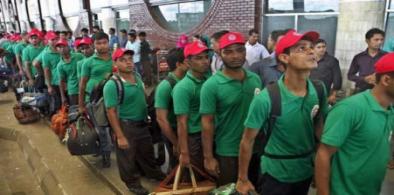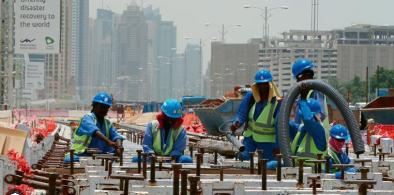More Bangladeshi migrants arriving in Europe this year
Notwithstanding relative political stability, record-breaking economic growth and an increase in disposable income, more Bangladeshis have arrived in Europe this year than any other nationality, according to reports

Notwithstanding relative political stability, record-breaking economic growth and an increase in disposable income, more Bangladeshis have arrived in Europe this year than any other nationality, according to reports.
In the first six months, over 3,300 Bangladeshis had crossed the Mediterranean, mostly traveling via Libya, surpassing any other nationality for the first time since the United Nations High Commissioner for Refugees (UNHCR) began documenting arrivals in 2015.
So far this year, the number of Bangladeshi arrivals into Europe has exceeded the combined number of those traveling from the conflict-ridden nations of Syria and Afghanistan, and also from transit nations including Tunisia and Morocco, Bangladeshi and Indian media reports have said.
By 2021, Bangladeshis constituted the sixth-largest group of migrants worldwide, forming one of the largest populations by nationality in the UK, Italy and Greece.
However, infamously labeled a “bottomless basket case” in 1972 by then US Secretary of State Henry Kissinger, Bangladesh’s economy is now one of the world’s fastest-growing.
And, while the country’s government is accused of multiple human rights violations, it has succeeded to a large extent in mitigating the threat posed by Islamist groups.
The question that arises is why Bangladeshis are taking such huge risks to reach Europe despite the massive dangers of drowning in the Mediterranean.
This year alone over 1,000 migrants have died or disappeared en route, with at least 60 Bangladeshis dying in July. Human trafficking and extortion are also rife with some speculating that climate change could be behind the migration. Few countries are considered as vulnerable as Bangladesh, where two-thirds of its 166 million citizens live less than five meters above sea level, according to The Telegraph.
It is estimated that by 2050 one in every seven people in Bangladesh will have been displaced by climate change, largely due to tidal flooding caused by sea-level rise.
Already, several thousand displaced people are said to be arriving in Dhaka every day from Bangladesh’s remote, rural areas. Many are citing the changing environment as their reason for migrating.
But, experts say the climate-driven movement is currently limited to domestic migration, as these typically poorer Bangladeshis can’t afford to send themselves and their families abroad.
The majority of those traveling to Europe are economic migrants aged between 30 and 35 who travel via Libya – where ongoing conflict means its borders are porous – in pursuit of better-paid jobs, Islam Hasan, the program head for migration at NGO BRAC, said.
Organizations like BRAC are now urging the Bangladeshi government to explore bilateral deals with European countries so that its nationals can migrate legally and fill existing labor shortages.



















Post a Comment